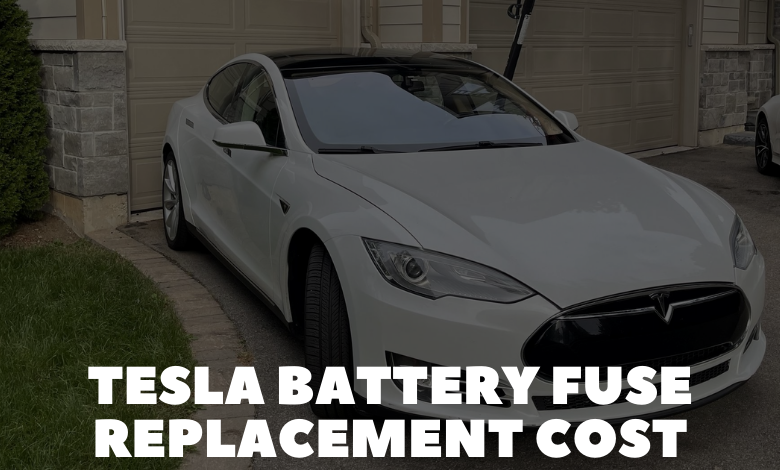Tesla Battery Fuse Replacement Cost

As a Tesla technician, I’m often asked about the cost of replacing a battery fuse in Tesla vehicles. While this might seem like a straightforward question, there are several factors that can influence the overall cost. In this comprehensive guide, I’ll delve into the intricacies of Tesla battery fuse replacement costs, covering everything from the components involved to potential warranty coverage.
Understanding Tesla Battery Fuses
Before we delve into the costs associated with replacing a Tesla battery fuse, let’s first understand what these fuses are and why they’re essential. Tesla vehicles, like all electric vehicles (EVs), rely on a complex electrical system to power various components, including the battery pack, motor, and auxiliary systems.
Battery fuses serve as critical safety devices that protect these systems from electrical faults, overloads, and short circuits. They act as a barrier, interrupting the flow of electricity when necessary to prevent damage to sensitive electronic components and ensure the safety of the vehicle and its occupants.
Factors Affecting Replacement Costs
Now that we’ve established the importance of battery fuses in Tesla vehicles, let’s explore the factors that can influence the cost of replacing them:
- Model of Tesla: The cost of replacing a battery fuse can vary depending on the specific model of Tesla. Tesla’s lineup includes several models with different battery configurations, ranging from the Model S and Model 3 to the Model X and Model Y. Each model may have different fuse layouts and accessibility, which can impact the complexity and labor required for replacement.
- Type of Fuse: Tesla vehicles utilize various types of fuses, including traditional blade fuses, cartridge fuses, and more advanced semiconductor fuses. The type of fuse needed for replacement will depend on the specific electrical component being protected and its power requirements. Semiconductor fuses, for example, tend to be more expensive than traditional blade fuses due to their advanced technology and enhanced protection capabilities.
- Location of Fuse: The location of the fuse within the vehicle can also affect replacement costs. Some fuses may be easily accessible and located in accessible areas, while others may be located deep within the vehicle’s electrical system, requiring more time and effort to reach. Accessibility can impact the labor involved in the replacement process, thereby influencing overall costs.
- Labor Costs: Labor costs associated with replacing a battery fuse will vary depending on the complexity of the repair and the rates charged by the service center. Tesla service centers employ trained technicians who are experienced in working with electric vehicles and their intricate electrical systems. Labor costs typically include the time required to diagnose the issue, locate the faulty fuse, replace it, and perform any necessary testing to ensure proper functionality.
- Diagnostic Fees: In some cases, Tesla service centers may charge a diagnostic fee to identify the specific issue causing the fuse failure. This fee covers the time and resources required to diagnose the problem accurately and provide an accurate estimate for the repair. However, diagnostic fees are often waived if the repair is performed at the same service center.
Warranty Coverage and Cost Considerations
Now that we’ve covered the factors influencing battery fuse replacement costs, let’s explore warranty coverage and how it can impact the overall cost to the vehicle owner:
- Warranty Period: Tesla vehicles come with a New Vehicle Limited Warranty that covers defects in materials and workmanship for a certain period or mileage, whichever comes first. The warranty period typically ranges from 4 years or 50,000 miles to 8 years or 120,000 miles, depending on the specific components being covered, such as the battery and drivetrain. If the battery fuse failure occurs within the warranty period and is determined to be covered under warranty, the replacement cost will likely be covered by Tesla.
- Extended Warranty Options: Tesla offers extended warranty options for additional coverage beyond the standard New Vehicle Limited Warranty. Extended warranties can provide peace of mind and financial protection against unexpected repair costs, including battery fuse replacements. If you’ve opted for an extended warranty, check the terms and conditions to determine whether battery fuse replacement is covered and any associated costs.
- Out-of-Warranty Repairs: If your Tesla vehicle is no longer covered under warranty or you’re facing a battery fuse issue that isn’t covered by warranty, you’ll be responsible for covering the cost of the replacement. In such cases, it’s essential to obtain a detailed cost estimate from a Tesla service center or authorized repair facility before proceeding with the repair.
Conclusion
Replacing a battery fuse in a Tesla vehicle involves more than just the cost of the fuse itself. Factors such as the model of Tesla, type and location of the fuse, labor costs, diagnostic fees, and warranty coverage can all influence the overall cost of the repair.
While warranty coverage can provide financial protection against unexpected repair costs, out-of-warranty repairs may require careful consideration and budgeting. As always, it’s essential to consult with a qualified Tesla technician or service center to assess the specific issue and obtain an accurate cost estimate for the replacement. By understanding the factors influencing Tesla battery fuse replacement costs, vehicle owners can make informed decisions and ensure the continued reliability and safety of their Tesla vehicles.
